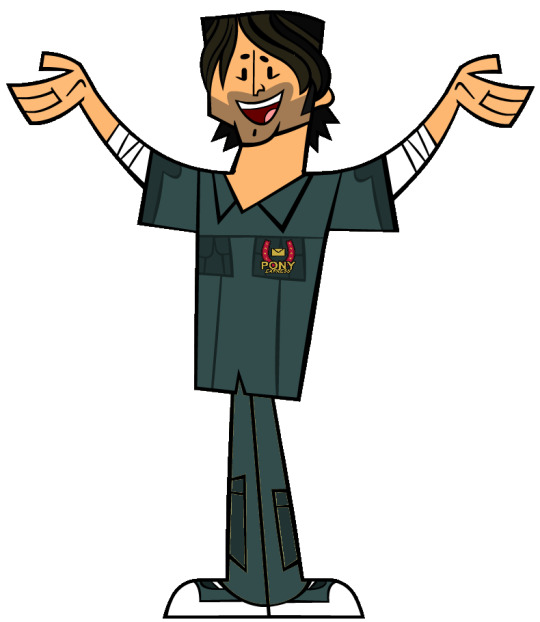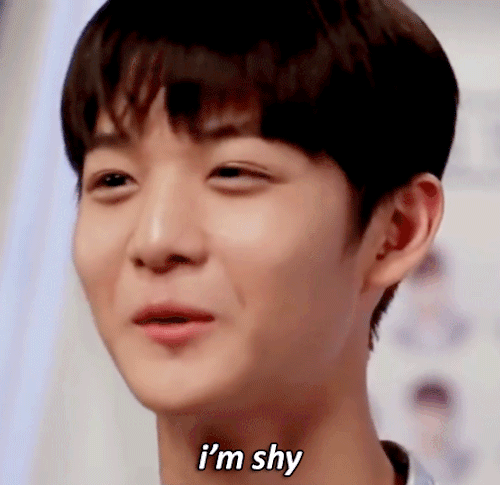#i think ultimately this is funnier without a caption.
Explore tagged Tumblr posts
Text

#i think ultimately this is funnier without a caption.#mouthwashing#mouthwashing game#wrong organ#op#mw
514 notes
·
View notes
Photo

THEATER / 2018-2019
The Play That Goes Wrong
Written by Henry Lewis, Jonathan Sayer, and Henry Shields of Mischief Theatre Company Directed by Mark Bell
So, What’s Going On?
In the aptly named The Play That Goes Wrong, very little goes right—and, as promised, just about everything goes wrong. The curtain rises on the actors and crew of the modern-day Cornley Polytechnic Drama Society preparing for their own curtain to rise; it’s also opening night for their whodunit, Murder at Haversham Manor. Their murder mystery takes place in 1922 at the home of Charles Haversham, who lies “dead” on stage as the curtain rises on Act I of the drama society’s play.
(Are you getting all this?)
As Charles’s friends and his fiancée Florence express their distress over his death, a series of plot twists unfolds, and technical difficulties begin to complicate the production. Sound effects go awry, set pieces malfunction, and misplaced props thwart the actors’ efforts to fulfill their dramatic intent. They persevere nonetheless, steadfastly carrying out their prescribed roles with absurd adherence to their scripted lines and movements, even when these actions no longer make sense.
With her groom-to-be’s body barely cold, Florence finds herself on the receiving end of a new proposal! (How timely!) Meanwhile, the Inspector arrives to investigate Charles’s death. Could Florence’s brother have been involved? Or Florence herself? What about Charles’s brother—who also happens to be Florence’s lover…?
(We warned you there’d be plot twists and turns.)
As the investigation continues, the action becomes increasingly madcap. A door hits Sandra, the actress playing Florence, who passes out, and Stage Manager Annie must replace her, with script in hand. Miscues, missteps, and misinterpretations lead to growing chaos as a poorly constructed set puts the actors in danger. The fake elevator’s floor breaks, the second story of the manor tilts precipitously, and too many actors to name end up nearly crushed or otherwise imperiled.
(And so, you have to ask…)
Can the Inspector solve the mystery of Charles’s murder? Will Sandra regain consciousness? If/when she does, will Annie be willing to give up playing Florence? If/when she isn’t, which woman will prevail? And has anyone noticed the set’s too-loose chandelier...?
It looks like most characters will survive the play-within-a-play. But will they survive The Play That Goes Wrong?
Here’s a sneak peek (“The Play That Goes Wrong at The Kennedy Center”): https://youtu.be/1EyI5mAFY90
youtube
Who’s Who
Here’s a very, very helpful note: In The Play That Goes Wrong, names are two-for-the-price-of-one, with each actor playing a character and each of those characters acting in the play-within-a-play. Good luck keeping them straight! (If in doubt, focus on the names of the murder mystery characters, as they’re used more frequently.)
table, th, td { border: 1px solid black; border-collapse: collapse; } th, td { padding: 15px; }
Characters in The Play That Goes Wrong
Characters in Murder at Haversham Manor
Annie, stage manager for the Cornley Polytechnic Drama Society (CPDS)
Fills in as Florence Colleymoore (see below)
Trevor, lighting and sound operator for CPDS
Fills in as Florence Colleymoore (see below)
Chris, head of CPDS; director of Murder at Haversham Manor
Inspector Carter, esteemed local official
Jonathan, actor for CPDS
Charles Haversham, deceased
Robert, actor for CPDS
Thomas Colleymoore, Charles’s old friend
Dennis, actor for CPDS
Perkins, Charles’s butler
Max, actor for CPDS
Cecil Haversham, Charles’s brother, and Arthur, his gardener
Sandra, actor for CPDS
Florence Colleymoore, Charles’s fiancée and Thomas’s sister
The Play Within a Play
There’s a long dramatic tradition of performing plays within plays, though the inner production does not usually comprise as much of the overall show as in the case of The Play That Goes Wrong. Among the most famous early examples, Shakespeare made use of this technique in his comedy, A Midsummer Night’s Dream, and in Hamlet, a tragedy.
In Hamlet, the title character devises a theatrical performance intended to mirror a crime he believes his uncle to have committed in order to prompt a reaction that will prove his uncle’s guilt. Much more recently, the comedic musical The Producers told the story of two theater producers who put on a show they intend to be a flop, Springtime for Hitler, and find that it is an unexpected hit.
In The Play That Goes Wrong, the “inner” show is the entirety of the performance we see, with our Act I corresponding to the characters’ Act I, and the same for Act II. We see the story of an amateur production gone awry. Just as in Hamlet, the inner show is a murder mystery (but this one is set in 1922 and is not being performed for the purpose of catching an actual murderer).

Caption: In The Play That Goes Wrong, the standing clock becomes a stand-in for a character (who is stuck inside); here, it has “fainted” and is resting.
The Language of Stagecraft
Because you’re watching two plays in one, you might like to familiarize yourself with these words related to theatrical productions:
Blackout: what happens when all the lights on stage go out (on purpose); often occurs at the end of an act.
Company: a group of theater performers.
Cue: a line that prompts an action to take place, including another actor speaking a line, entering, or exiting; a change in lighting; a sound effect; a scene change; or a prop placement.
Interval: another word for intermission, which is the break between acts.
Opening night: the first official performance of a theater production.
Stage manager: a person who takes charge of “tech,” or the technical elements of a show, including sets, lighting, props, and costumes. In this show, Annie is the stage manager for the Cornley Polytechnic Drama Society.
What to Look and Listen for…
In The Play That Goes Wrong, actors use physicality to emphasize the absurdity of their show’s unraveling. Exaggerated physical movements also known as “slapstick” (a term originating from the loud sound produced by hitting two wooden sticks together to mimic a slap), help to promote the insanity as the cast tries mightily to perform their play.
The show’s promotional materials reference Monty Python, an apt comparison to the 1970s British comedy group also known for its physical humor (search for the sketch “The Ministry of Silly Walks”—and then, if you still have a taste for British physical humor, search for “Mr. Bean”!). In The Play That Goes Wrong, watch for ways that the actors take advantage of carefully rehearsed “accidental” movements to make their actions funnier.

Caption: An actual slap stick Accessed from https://en.wikipedia.org/wiki/Slapstick#/media/File:Bic_(instrument).jpg
Keeping all of this in mind, check out:
How the murder mystery actors point to their verbal uncertainties by using their bodies. Dennis, who plays Perkins, refers to cues he’s written on the back of his hand when he needs to say a difficult word, such as “façade” or “morose.” And when Annie fills in for Sandra to play the role of Florence, she reads directly and without subtlety from a script.
How the show takes advantage of all set pieces and props, finding ways to break or mishandle each one to add to the comedic effect. The stretcher’s canvas rips, leading the actors to carry it out absurdly without Charles Haversham’s body. The door jams, the door handle falls off, the contents of the coal scuttle catch fire, and the entire second floor begins to tilt Titanic-like. Anything that can go wrong does.
The way characters must rush to compensate for (deliberate) structural problems on the set of the murder mystery. When the Stage Manager, Annie, can’t attach the mantelpiece to the stage wall, she has to hold props herself (see below). When the actor playing Perkins can’t leave through the door, which is stuck, he instead climbs into the clock. The actors are flexible when it suits them but stick to the script rigidly at other times—all to maximize comedic effect.

Caption: With no mantelpiece in sight, Stage Manager Annie becomes a human candelabra.
Think About…
How, in addition to featuring a play within a play, the cast of The Play That Goes Wrong breaks the fourth wall (between themselves and you, the audience) when bookending the acts. Look for cast members to solicit help from or speak to the audience.
Moments of dramatic irony, meaning that the audience enjoys the tension of knowing more than a character does and awaiting the results. We know, for instance, that the Stage Manager, Annie, has replaced the empty bottle of “scotch” with a flammable (and potentially toxic) product, though the actors don’t notice—and we also can foresee their horrified reactions before they take their first sips.
How half-hearted pantomime adds another humorous element to the action, as when Max, playing Arthur the Gardener, walks in with a leash and no dog. “Get down!” he tells the empty space. “Quiet, Winston!” he shushes into silence. And, ultimately, to remove the dog from the house—“I’ll put him outside”—Max throws the leash out the door.

Caption: Max and Sandra—as Cecil and Florence—almost kiss.
Take Action: Challenge Yourself
Mischief Theatre has made good use of the “goes wrong” concept, from The Play That Goes Wrong to Peter Pan Goes Wrong to The Nativity Play Goes Wrong. In fact, much of comedy relies on surprise outcomes, from the slipping-on-a-banana-peel gag to the trickery and mistaken identities that fuel the plots of farces. Mishaps are the underpinning of the concept of irony—when what you expect to see or hear is not what ends up appearing. That’s certainly the case in The Play That Goes Wrong.
You, too, can make use of this technique to drive your own comedic productions. To practice, pick a short story, a scene from your favorite movie or play, or even a historical moment. Then try to rewrite it and have everything go wrong. Perhaps Little Red Riding Hood is color blind; or Barack Obama decides to run for president of the marching band instead of President of the United States of America; or the Grinch steals Chanukah instead of Christmas, and his dog Max keeps stopping to eat latkes and loses track of their sleigh. Imagine all the wacky potential of just one altered plot element—and then add more!
If you’re comfortable sharing on social media, post your comic composition to your favorite platform using the hashtag #storiesgonewrong.

Caption: The set’s window provides a more reliable entrance than the door, which gets stuck shut.
EXPLORE MORE
Go even deeper with the The Play That Goes Wrong Extras.
-
All production photos by Jeremy Daniel.
Writer: Marina Ruben
Content Editor: Lisa Resnick
Logistics Coordination: Katherine Huseman
Producer and Program Manager: Tiffany A. Bryant
-

David M. Rubenstein Chairman
Deborah F. Rutter President
Mario R. Rossero Senior Vice President Education
Theater at the Kennedy Center is made possible by

Major support for Musical Theater at the Kennedy Center is provided by

The Kennedy Center Theater Season is sponsored by Altria Group.
Major support for educational programs at the Kennedy Center is provided by David M. Rubenstein through the Rubenstein Arts Access Program.
Kennedy Center education and related artistic programming is made possible through the generosity of the National Committee for the Performing Arts.
© 2018 The John F. Kennedy Center for the Performing Arts
2 notes
·
View notes
Text
wanna one as your fanboys
requested by my fav woojin stan anon lol

have a gif of your man btw lol
a reverse au where instead of them being your idols, you’re being their idols.
a/n: i did some editing on minhyun’s bc this man ain’t quiet,,, he’s literally the loudest out of nu’est smh
jisung:
MEMES. Jisung would be the one fan who’d be turning you into a living meme. Even if you already were a living meme, he’d make you into an even funnier one. Plenty of screenshots of your cute derp faces would be sent to his friends often as reactions, due to the fact that he couldn’t react to their messages in real life. Sometimes, if he were ever feeling especially hilarious, he’d message you on Instagram with a meme he made of you captioned, “notice me unnie/oppa, please!” You’d view his profile when you were looking through your incredibly filled DMs, and you’d laugh loudly at the sight of his clearly male feed. If he met you in real life, he’d spend his time making you laugh with puns and funny faces the entire time, since it was short lived and he wanted to do anything to make it last.

sungwoon:
Sungwoon admired you so, s o much, and no one could blame him, because he believed you were perfect. You were the juniors of his buddies, Kai and Taemin, and at one point, he was jealous that they were under the same company as you were. “So, like, when is your CEO gonna let me into the building to let me see (y/n) - I mean, your group members?” He’d ask them every once in a while. Sungwoon would also be singing along to your parts in your latest hit single while he was with his group of friends as if it weren’t obvious enough that he liked you. Once they finally obliged to him meeting you, his ears would heat up once he saw you, like they typically did when he was embarrassed. You would probably also hear some small voice cracks every now and then while talking to him, but probably because he was tired and flustered, which didn’t exactly click in his agenda. Oh well - you called him adorably handsome, and that’s all that matters.

minhyun:
There were two sides to his fanboy, the fanboy where he’d be smiling to himself when he hears your name on the streets or something, and the fanboy where he’s jumping around the house and happily screaming your new song. Neighbours of his wouldn’t be surprised when they hear his loud voice on the other side of the wall. Minhyun also seems like someone who enjoys making covers of your songs. He was pleased to think that your songs, your angelic voice matched with his light and thin tone extremely well. People who followed him were also your fans and they enjoyed his covers when he occasionally posted them, but the most important thing here is that they literally begged Minhyun to do a (y/n) selca day thing because they thought the two of you looked great together. After crying to himself, ranting to Dongho about it (”they’re like me to you, bro, they aren’t gonna let me live”), and disagreeing with his followers for the longest time, he would post it. And, not gonna be lying here, they were right - the amount of visual in that relationship would be incredible.

seongwoo:
Similarly to Jisung, he’d express his love through memes and other funny things. He’d probably be the type who has a spam account on Instagram where he posts crack videos that he made of you and photos of you making hearts captioned, “have I ever mentioned how much I f u c k i n g love (y/n) because I LOVE (Y/N) SO MUCH”. Probably also in the comments section of your music videos with the most original comments, including jokes and gags without forgetting to mention how great you looked and how wonderful you sounded. Seongwoo would never hesitate to start jamming out to your songs if they ever came on in public, hitting some of the dance moves smoothly while shopping for clothes. He’d draw some attention to the other shoppers, and he’d be hoping the slightest bit that you were there watching him dance as well.

jaehwan:
I don’t know why (lol), but Jaehwan seems like a proud member of stan twitter. Sometimes, he’d be really soft and post acoustic covers of your songs which would cause an uproar in the fandom. He’d smirk once he saw the amount of reposts there were on Twitter itself, as well as seeing his covers on Instagram and Tumblr. Other times, he’d be shitposting just as much as Seongwoo would be. Heck, Jaehwan and Seongwoo would probably be partners in crime, making the dankest memes possible and making other users vote for which meme is better. Jaehwan’s probably also the type to ship himself with you, saying things like, “look at that. Just look at it, Ong, (y/n) and I would be the ultimate visual couple. Ultimate visual, vocal, flute playing couple. No, shut up, I don’t care if (y/n) plays the clarinet. Our children would inherit our talent and beauty and they’d be fucking legends just like (y/n) was.”

daniel:
As we all know, Daniel loves dancing to Signal, so he loves dancing to your songs as well. Like his husband #ongnielisscience Seongwoo, hearing any of your big hits in public means a celebratory dancing spree, no matter what he was doing at the time. At the vet for his cats? He’d be doing the hand movements in the waiting room. Just woke up from a coma? Playing your music gets him back into daily routine immediately. Preparing dinner with his family? He’d be shuffling down the counter to the upbeat melody. Asides from that, he would seems like the type of person to think about your ideal type every once in a while - he thought about how he would make a good boyfriend to you. Of course, he was smart enough to keep his daydreaming to himself; that is, until he meets you in person and just falls for you even harder.

jihoon:
I can honestly imagine Jihoon being your classmate while you’re an idol. He’d admire you from afar while you were with your close friends, he would feel jealous once someone else came over to talk to you about your popularity. He looked up to you greatly and quietly listened to your music both in his free time and, often times, during class. If he was feeling rather ambitious that day, he’d casually start talking to you about your music and your group members if the solo game wasn’t the the thing for you. “Ah, yeah, you know your friend, (group member name i literally can’t think of a name on the spot)?” He’d ask while trying his hardest not to freak out over the fact that he was talking to a celebrity, his idol, to be much more specific. “Yeah. What, do you like them? Wanna meet them someday?” You replied jokingly. He chortled at your statement, mainly because they weren’t the one he liked, but you were.

woojin:
Super big throwback to his cover of BoA’s Only One, there would be low quality footage of Woojin dancing to your song jokingly. Once that circulated around, he’d be an embarrassed mess thinking about how you could’ve been watching the video at that moment. Spoiler alert: you were, and you thought it was absolutely adorable. You even reposted it with the caption “thank you, my fans, for such great content” or some shit and Woojin would be bawling his eyes out like, “I’ve won, but at what cost?” (uh jokes aside,,,) He would upload a proper dance cover and blow literally everyone away, including you. His smooth dancing and his ability to hit every move with precision made you question yourself on your dancing skills. (ok but i’m sure you’d be a great dancer <33) When you reposted that cover of his, he would bawl again, but this time, he shed some happy tears instead.

jinyoung:
From the looks of his Kyulkyung fanboy days, Jinyoung seems like someone who’d defend their idols to a certain extent. If he encounters a troll among your Instagram feed, he’d definitely call them out with a bit of insult, and it’d be brought to your attention. He probably also runs a fan account where he posts photos of you and captions them with cheesy love quotes; not to the point where it’s Seongwoo or Jaehwan-level shit posting, but a regular fanpage that posts fan taken photos as well as performances on music shows and, sometimes, fancams. He’d be thrilled to hear that you and/or your group were coming to his town, but once someone brought it up, he’d act all shy and deny any notions of wanting to meet you. However, on his breaks, he’d go and see you in person, his heart beating quickly when he saw you - all while being the shy boy he was.
also, you’d probably be like, “aw, your head is so smoL I’M CRYIN” and he’d fall over tbh

daehwi:
Daehwi would be the type of fan who would have a fanpage for you, much like his best friend Jinyoung. He’d be the main source of all the girlfriend/boyfriend!(y/n) aus because he honestly thinks that those are the absolute cutest, and he’d make them just as fluffy as possible while trying his best to be accurate at the same time. If you were in a group, he would make compilations of basically anything you were known for, whether it be your evil maknae schemes or your lovely singing parts. If he ever went to a fan sign, he’d be a smiling the mess the whole time once it was his turn to meet you. “Ah, I was so excited to meet you,” he would tell you, his natural overflowing aegyo making you feel all bubbly inside as you have a nice casual conversation with him. You probably ended your meeting with a hug from him as you told him, “come to our next fanmeet,” and he probably melted into a pile of gush inside.

guanlin:
Guanlin would be the quiet yet ambitious fan of yours. Much like Minhyun, he wouldn’t shove his love for you in everyone’s faces, but he’d be much more obvious with those close to him. “(y/n)’s really soft in this performance? Jihoon hyung, look at how wonderful (y/n)’s rapping is. Seonho, look, (y/n)’s just as cute as you are.” Every once in a while, he’d go and binge watch your funny videos, giving himself a huge laugh (which may or may not scare his hyungs). Just like any other of his idols, Guanlin looks up to you greatly. You inspired him to do better at his own talents, and if you were to ever find out about this, you’d be amazed on how fast his improvement rate was. Needless to say, he had a little celebrity crush on you for a lot of reasons, from your lovely personality to your fans to your charismatic presence on stage.

peep euiwoong - i mean
hit my inbox up y’all!! and here is my masterlist!! + sorry if this was a bit shitty lol
#lol the first ones i wrote for were seongwoo and jisung and jaehwan bc??? they're memes#lmao#wanna one scenarios#wanna one imagines#pd101#pd101s2#produce 101 scenarios#produce 101 imagines#kang daniel#park jihoon#lee daehwi#kim jaehwan#ong seongwoo#park woojin#lai guanlin#yoon jisung#hwang minhyun#bae jinyoung#ha sungwoon#this was really cute tho#noah fence but whoever's reading this would make a bomb ass idol y'all#i'd stan 11/10#also you can tell i love baekmin#lots of tears are bein shed i miss dongho and minhyun together#i miss nu'est together aye yah
57 notes
·
View notes
Text
Want to Write a Successful Fitness Blog? Start by Mastering This
I hear voices in my head. In a good way.
You probably do too. There’s the voice you use when you’re around friends and family, the one that sounds most like the “real” you. Then there’s the one you switch to when you’re trying to impress someone, a voice with big words and the occasional study reference.
When you’re on social media, you probably use that first voice, the one with all the jokes. And when you write blog posts, there’s a good chance you switch to the second voice, the one with all the footnotes.
But you also have a third voice. It’s the one you use with clients. The one that’s friendly but authoritative. The one that explains things with words and coaching cues they understand, and motivates them in ways that address their goals and acknowledges their struggles.
And it’s that voice—the one that connects with the people who need your help—that’s most likely to build an audience for your content.
Before I give you some ways to channel that voice into your health and fitness writing, let me explain who I am, and how I learned what I’m about to share.
READ ALSO: How to Start a Fitness Blog: The Ultimate Guide
Game of tones
My first grown-up job, nearly 30 years ago, was writing jacket and marketing copy for Putnam-Berkley, one of the biggest book publishers of its time. I racked up more than 1,000 book covers in every conceivable genre, and an equal number of pages for the monthly catalogs we produced for booksellers.
What I wrote to convince a reader like you to buy the new Stephen King was different from the writing in the catalog, where the goal was to convince a bookseller to order a lot of copies. And both were different from what I wrote for the back cover of a Star Wars novelization or a Tom Clancy thriller or a western or a romance novel.
In my next job, as a writer and editor at Men’s Health, I had two challenges: The first was to give readers the information they’d paid for. The second, and equally important, was to do it in the Men’s Health voice, which was distinct from any other publication back then. It’s imperative and masculine, promising benefits with a couple of laughs and a bit of swagger. It’s the voice of someone you’d want to have a beer with.
Compare that to my subsequent years with Weight Watchers. WW’s brand was calm and earnest, with the voice of your nonjudgmental friend who minored in social work. It was like switching from classic rock to ASMR.
Mastering a voice like that requires knowing which words to use, and which to avoid. The second category, they told me, includes words like “exercise” and “workout.”
Sounds crazy, right—a weight-loss brand shying away from basic fitness terms? As they explained it to me, about a third of WW members exercise in the classic sense. The middle third walk and do little else. The other third do nothing. Our content needed to keep all members engaged, which meant that we didn’t want to intimidate or put off people who have no desire to go to a gym.
So instead of “exercise,” we used “movement” or “physical activity.” That way we could reach everyone and exclude no one.
My point: A brand’s voice is everything. It has rules. It has nuances. It also transfers well across any medium, which is why a clear voice is so effective. Once you capture it for your brand and audience, creating the content you need becomes a lot easier.
How to find your voice
Let’s get back to those voices in your head.
Consider all the conversations you have with your clients in a typical week. Do you talk the same way to each one? Not likely. How you instruct and motivate a middle-aged guy who just got divorced and wants to lose 25 pounds before he starts dating again will be different from the way you coach a 25-year-old woman who’s training for her first obstacle course race. And both of those are different from the way you talk to a 65-year-old who just had a hip replacement.
Once you identify the nuances that make your coaching effective with different clients, the next challenge is to re-create them in your blog posts, or anything else you write.
I’ve divided the following tips into three categories: your brain, your language, your audience. Each is a distinct battlefront in the struggle to get and hold your readers’ attention. But each, as you’ll see, overlaps with the others.
READ ALSO: Fitness Blog Ideas: 10 Proven Ways to Win More Readers
Part 1: Training your brain
Stop fast-forwarding through ads
And while you’re at it, stop deleting all your spam. Pay close attention to the language copywriters use to speak directly to their target customers. Chances are, that language repels you, but that’s okay. They’re not trying to reach you.
Analyze the stuff vying for your attention. Compare the copy that targets you specifically, based on something you showed interest in, to the spam that hits your inbox just because it can. What attracts or repels you? What can you learn?
Don’t accidentally repel those you want to attract
I made a point earlier about how your speaking voice relates to your written voice. It’s true in general, but the specifics matter. Your spoken language doesn’t need to be as precise because it comes with all kinds of verbal and nonverbal cues that signal your intent and authority.
You don’t get the benefit of the doubt when you’re writing for an audience who isn’t in the room with you. Something a client would understand as hyperbole might look like arrogance, or an insult to the reader’s intelligence.
Build empathy
To connect with the audience, you have to imagine what it’s like to be them.
What are their lives like? What are they dealing with? What do they want to conquer? Picture where they’ll be when they read your words. On a subway headed home? At their desk at work? In their pajamas in bed? Are they stressed or happy? Half-asleep or energized?
You may know what they need, but until you can feel all their feels, you won’t be able to convince them you have the solution they’ve been looking for.
Part 2: Mastering language
Use words wisely
Your brain is filled with training-specific nomenclature you’ve learned through years of education, reading, and contact with people who think like you. Sometimes you use those words with clients, but would they understand if you weren’t there demonstrating and cueing the points you’re trying to get across?
True mastery of language means knowing multiple ways to describe the same thing. You don’t sacrifice any authenticity by explaining your ideas in words your audience will understand without Googling them.
Keep it short
Brevity matters. As a magazine editor, I learned to trim any story to fit the allotted space without losing anything important. If pressed I could compact 100 words down to a 10-word caption or even a five-word subhead.
The easiest thing to cut: The part where you tell readers what they already know. If you lead with, “You want to lose weight and don’t have time to exercise three hours a day,” you’re wasting your reader’s time.
Don’t ignore the nuances
Mark Twain once said, “The difference between the almost-right word and the right word is the difference between the lightning bug and the lightning.”
Words you think are interchangeable can convey different meanings to different audiences. It’s why one reader will react favorably to “toned” but be turned off by “lean and muscular.” One reader wants to be “strong” while another wants to be “sexy.” One wants to “get in shape” while another wants “more energy.”
We could be talking about the exact same program, but if your words don’t connect with your target reader’s aspirations, you won’t hold their attention.
READ ALSO: Fitness Blog Post Titles: 7 Rules for Making Your Headlines Irresistible
Part 3: Understanding your audience
Spring forward, fall back
Ten years ago, if you’d tried to lure a female audience with words like “badass” and “fierce,” you’d have made approximately zero headway. Today those words have been used so often, for so many products, they may already have lost their ability to inspire and excite.
I’m not the target customer, so I can’t say.
But that’s my point. You’re probably not your own target customer either. And if you’re not in close contact with the people you’re selling to, there’s a chance they’ve moved on from words that once triggered them.
On the flip side, your mastery of up-to-the-minute buzzwords may have no impact at all on readers who don’t follow trends and may even distrust someone who uses them. You can’t sell “self-care” to someone who doesn’t care.
Give ’em the real you
Not everyone is funny. Or alpha. Or an influencer. Or whatever ideal version of yourself you think you should project. So even though we all want to show ourselves at our best, your voice still needs to come from a genuine place. You can hide what you are, but you can’t fake what you aren’t.
Instead of thinking how you can be funnier, if that’s not your strong suit, try to convey the best you to your audience. What do your clients like best about you? Is it your service? Your knowledge? Your sincerity and empathy? Your everyday approachability? Write like that person.
Be a creator, not an artist
Perfectionism comes from fear, and boy, does that apply to writing. If you find yourself endlessly rewriting, editing, and tweaking, ask yourself an honest question: What are you afraid of?
If you don’t think you’re getting your message across, ask a colleague or mentor to look at your work with fresh eyes and give you an appraisal. But if the problem is that you don’t like the way you’re coming across, you need to ask yourself some hard questions. Are you trying too hard to be funny? Are you trying to cram in too much detail because you’re afraid you won’t look as smart as you think you are?
Step back and remind yourself this isn’t about you. It’s about the value of what you have to say. If your message isn’t strong enough to stand on its own without those jokes or memes or citations, maybe you just need to make it better.
Never, ever lie
Amid all these words about words, let’s remember not to use them to exaggerate, obfuscate, deceive, overstate, mislead, or perjure, no matter how cleverly you present the fib.
If you can’t tell the truth, you can’t sell the truth.
A version of this article first appeared in the January 2019 issue of Fitness Marketing Monthly.
The post Want to Write a Successful Fitness Blog? Start by Mastering This appeared first on The PTDC.
Want to Write a Successful Fitness Blog? Start by Mastering This published first on https://onezeroonesarms.tumblr.com/
0 notes
Text
A world without Down's syndrome? - BBC News
check it out @ https://tuthillscopes.com/a-world-without-downs-syndrome-bbc-news/
A world without Down's syndrome? - BBC News
90 percent of individuals within the United kingdom who know the youngster is going to be born with Down’s syndrome come with an abortion – there are concerns a brand new, highly accurate test to recognize babies using the condition, can result in much more terminations.
“The physician stated to all of us: ‘I’m sorry, I am so sorry.’ The nurse working cried. I do not think anybody stated anything more positive,” states Sally Phillips. “It can’t happen to be different if they’d explained my child wasn’t will make it.”
Her boy, Olly, was ten days old, as he was tested for Down’s syndrome – the outcomes returned positive. But Phillips – the actress and screenwriter most widely known on her roles in Miranda and Bridget Johnson – found existence having a child with Down’s syndrome wasn’t exactly what the hushed tones and apologies had brought her to anticipate
“I had been told it had been an emergency and really it is a comedy. It’s just like a sitcom where something seems to visit wrong there is however nothing bad in the finish from it.Inch
She describes existence in her own family as “just slightly funnier compared to other families,” because of Olly, who’s now 12 and would go to a mainstream school. She also offers two more youthful children, neither who have Down’s.
“Getting Olly within my existence has altered me and my loved ones for that better. He’s slightly worse impulse control but this means that it is extremely funny because he’s frequently saying precisely what everybody’s thinking but is simply too shy to state.
“He’s also incredibly caring. He’s the only person of my three kids who each day asks me how my day was. He’s really kind. He’s really centered on others. He’s really gifted emotionally. He’ll notice if individuals are upset after i will not.”
Learn more
Media captionMeet Sally and Olly
Sally Phillips explores the problems round the new prenatal test in A World Without Down’s Syndrome at 21:00 on Wednesday 5 October on BBC Two.
Within the United kingdom, about 750 babies are born with Down’s syndrome each year and you will find an believed 40,000 people in the united states coping with the problem.
Almost everyone has 23 pairs of chromosomes, but individuals with Down’s come with an extra copy of chromosome 21, meaning they develop differently and also have different amounts of learning disability. Some kids with Down’s have couple of health issues, but certain medical complications – for example heart, gut, hearing, or thyroid conditions – tend to be more common in individuals with Down’s.
The current NHS screening, that is provided to all pregnant women will, gives a sign from the likelihood that the baby may have Down’s. When the foetus has got the condition, there’s an 85% to 90% chance the existing test will get it, but a couple of.5% of good results are false which babies do not have Down’s.
Right now, the next thing is amniocentesis or CVS (chorionic villus sampling), the only real tests that may for sure show whether an infant has Down’s syndrome. These two exams are invasive – a needle can be used to consider an example from the fluid all around the baby or cells in the placenta – and have a chance of miscarriage. It is a risk some women will not take.
Image copyright Science Photo Library
Image caption Amniocentesis is generally led by ultrasound
This is when NIPT – the brand new non-invasive prenatal bloodstream test – is available in. It might soon be provided to women being an extra, next step within the screening process. It’s 99% accurate and carries no recourse of miscarriage.
Therefore the false positives is going to be identified earlier and less invasive tests transported out.
That sounds good �� however, many people, including Sally Phillips, worry it’ll imply that more foetuses with Down’s is going to be identified and aborted.
NIPT has already been obtainable in private clinics. One lady in her own 20s who tried on the extender to discover that her baby had Down’s syndrome met track of Phillips to speak about her experience.
Following a positive NIPT test she went ahead by having an invasive test which confirmed the end result.
Even the best case scenario isn’t what I want for my son
It was her first pregnancy. Unsure of what life for the child would be like, she and her partner did some research online looking at news reports, videos of people with Down’s and support group websites.
“Rather than the clinical research and a doctor saying, ‘This is what it will look like,’ what I was more interested in was family stories,” she says. They found a lot of positive and inspirational testimonies, but some were troubling.
“There were blogs by mums so you see some of the difficulties that people are going through. There was one woman, her five-year-old’s still not walking and he’s very heavy and she’s having to deal with him having fits everywhere,” she says.
“If my child was affected as much as he was I would feel really guilty about that having been given the choice. Even the best case scenario isn’t what I want for my son.”
So she and her partner decided to end the pregnancy. “We felt that was the best thing for the baby,” she says.
IMG 3 TT
For Phillips it can be difficult to accept that someone doesn’t want a child like hers.
And she is worried that her son will grow up in a world where more parents choose not to give birth to babies diagnosed with the condition. She gives the example of Iceland, where almost everyone screens for Down’s and 100% of women who have a positive diagnosis now terminate.
Icelandic photographer Sigga Ella, whose aunt had the condition, took a series of portraits of individuals with Down’s to boost understanding of the Down’s community there.
Image copyright Sigga Ella
Image caption Jakob
Image copyright Sigga Ella
Image caption Halldora
Image copyright Sigga Ella
Image caption Birta
However in the United kingdom in regards to a third of women that are pregnant opt from screening, therefore if that continues to be the situation, these babies who’ve Down’s continuously go undetected until they’re born.
Within the United kingdom the brand new test has been produced by Lyn Chitty at Great Ormond Street Hospital – professor of genetics and foetal medicine.
She transported out research to determine what women do when they’re offered NIPT. According to these studies she believes that the extra 195 babies with Down’s might be diagnosed in Britain every year before birth.
But though 90% of ladies within the United kingdom having a positive Down’s diagnosis have abortions, she does not accept is as true means many of these 195 pregnancies is going to be ended.
“I truly do not believe that we will be screening out Down’s syndrome,” she states. “I’ve found it quite distressing. I’d a journalist phone me up and say ‘You’re likely to annihilate Down’s.’ Well, I do not think that will happen.
“Unfortunately everybody’s searching at hypothetical scenarios, they are searching at ‘what if’ situations.
“We found that many women were while using NIPT test to discover whether their baby’s got Down’s syndrome, inform themselves and continue with her pregnancy. If you look at our statistics it won’t considerably alter the live birth rate.”
The data associated with terminations are complex and construed differently by both sides from the debate. But all experts agree that what sort of proper diagnosis of Down’s syndrome is presented may influence whether parents decide to follow the pregnancy.
Image copyright iStock
“The entire essence of the good screening programme may be the counselling you’ve even before you possess the bloodstream test done or even the scan done,” states Alan Cameron, foetal medicine consultant at Queen Elizabeth Hospital in Glasgow.
“You need to get an informed choice, and surely my experience is the fact that much less women would terminate now compared to what they ever did before since i think situations are better people Down’s kids getting good, healthy, lives, working locally, the thing is kids around with Down’s syndrome which are carrying out a good job.”
In early 1980s existence expectancy for a kid born with Down’s was twenty five years, however nowadays it comes down to 60, with a few living to their 70s. And a report published in 2014 shows how employers can usually benefit from hiring staff with Down’s.
Screening has not been a situation of “let us try to eradicate Down’s syndrome in the population,” states Cameron. “That’s never been the mission… It had been all on the rear of women’s choice.”
He admits, though, that although medics have lengthy considered the ethics and effects of screening among themselves, they weren’t excellent at discussing this using their patients and also the public.
This is when the Nuffield Council on Bioethics is available in. As the government will get prepared to announce the roll-from NIPT over the NHS, the council continues to be talking with scientists, doctors, policy makers, individuals with Down’s as well as their families to evaluate what impact it might have.
Ultimately you could have whole genome sequencing so you could test that sample for everything
Tom Shakespeare, Nuffield Council on Bioethics
“There has been screening for Down’s Syndrome for decades, so in terms of the enterprise of offering women informed choice NIPT doesn’t really change that,” says Tom Shakespeare, chairman of the Nuffield working group, which plans to publish its report in February.
But it does open the door to testing for other conditions.
“It could be used by people who have a single gene condition, like cystic fibrosis or muscular dystrophy or achondroplasia – my own condition,” he says.
“Ultimately you could have whole genome sequencing so you could test that sample for everything – it’s the next step and because NIPT is non-invasive you’re not going to risk the foetus.”
And for him, like Sally Phillips, it comes back to how results and information are given to prospective parents.
“I support the option of screening for those that want it but it needs to be on the basis of good quality information – why are prospective parents not being given the full information about Down’s syndrome?”
“It’s not just about trisomy 21 (Down’s syndrome) or risk of intellectual disability – it’s also about what are people’s lives like? What barriers do they face? Do they suffer? If you’re potentially having a baby with a condition, that’s what you want to know – how will it affect my family? How will it affect my child? How will it affect their life? How much of a problem is it?”
These are questions the new blood test is not able to answer.
Karen Gaffney is really a 38 year-old American lady with Down’s syndrome. This past year she gave a TED talk on why her existence matters. It is really an edited form of her speech – you are able to watch the full version here.
Image copyright Barbara Gaffney
I must begin by suggesting about my fifth grade teacher. It had been her newbie training after i demonstrated in her class. She did not know anything about Lower syndrome however that did not matter, because she understood I needed to understand, and she or he desired to educate. She and that i have remained in contact. A couple of years back, I acquired a unique letter from her – she explained that they was pregnant and she or he needed my help, because her baby could be born with Down’s syndrome!
She pressed back on any discussion of termination because she understood Lower syndrome from the different perspective than her physician did. She trained him about her fifth grade student… me!
At one time when individuals much like me were institutionalised. After I was created, the physician predicted which i could be lucky so that you can tie my very own footwear or write my very own name – he didn’t remember to say the part about me swimming the British Funnel.
We have started to see increasingly more youthful individuals with Down’s syndrome graduating from high schools, some starting with greater knowledge employable skills. You will find accomplished musicians, artists, golfers, models, actors and public loudspeakers, in addition to good employees making significant contributions for their companies and communities. All of these are heroines for what you can do regardless of one extra chromosome.
It is from perfect, though, breakthroughs haven’t come for everybody so we have battles to battle for inclusion.
Also it appears the race is onto find newer, faster methods to test for your extra chromosome before birth – the issue is without timely and accurate information, about all of our progress, when the test shows an additional chromosome, pregnancies are now being ended. We’ve individuals who say we should not be also born whatsoever.
In my opinion Down’s syndrome is really a existence worth tallying to. Every existence matters whatever the quantity of chromosomes we’ve.
Image copyright Barbara Gaffney
Image caption Karen Gaffney before a 9-mile go swimming across Lake Tahoe
Join the conversation – find us on Facebook, Instagram, Snapchat and Twitter.
Find out more: http://www.bbc.co.uk/news/magazine-37500189
0 notes
Text
A world without Down's syndrome? - BBC News
https://clearwatergolfclub.com/a-world-without-downs-syndrome-bbc-news/
A world without Down's syndrome? - BBC News
90 percent of individuals within the United kingdom who know the youngster is going to be born with Down’s syndrome come with an abortion – there are concerns a brand new, highly accurate test to recognize babies using the condition, can result in much more terminations.
“The physician stated to all of us: ‘I’m sorry, I am so sorry.’ The nurse working cried. I do not think anybody stated anything more positive,” states Sally Phillips. “It can’t happen to be different if they’d explained my child wasn’t will make it.”
Her boy, Olly, was ten days old, as he was tested for Down’s syndrome – the outcomes returned positive. But Phillips – the actress and screenwriter most widely known on her roles in Miranda and Bridget Johnson – found existence having a child with Down’s syndrome wasn’t exactly what the hushed tones and apologies had brought her to anticipate
“I had been told it had been an emergency and really it is a comedy. It’s just like a sitcom where something seems to visit wrong there is however nothing bad in the finish from it.Inch
She describes existence in her own family as “just slightly funnier compared to other families,” because of Olly, who’s now 12 and would go to a mainstream school. She also offers two more youthful children, neither who have Down’s.
“Getting Olly within my existence has altered me and my loved ones for that better. He’s slightly worse impulse control but this means that it is extremely funny because he’s frequently saying precisely what everybody’s thinking but is simply too shy to state.
“He’s also incredibly caring. He’s the only person of my three kids who each day asks me how my day was. He’s really kind. He’s really centered on others. He’s really gifted emotionally. He’ll notice if individuals are upset after i will not.”
Learn more
Media captionMeet Sally and Olly
Sally Phillips explores the problems round the new prenatal test in A World Without Down’s Syndrome at 21:00 on Wednesday 5 October on BBC Two.
Within the United kingdom, about 750 babies are born with Down’s syndrome each year and you will find an believed 40,000 people in the united states coping with the problem.
Almost everyone has 23 pairs of chromosomes, but individuals with Down’s come with an extra copy of chromosome 21, meaning they develop differently and also have different amounts of learning disability. Some kids with Down’s have couple of health issues, but certain medical complications – for example heart, gut, hearing, or thyroid conditions – tend to be more common in individuals with Down’s.
The current NHS screening, that is provided to all pregnant women will, gives a sign from the likelihood that the baby may have Down’s. When the foetus has got the condition, there’s an 85% to 90% chance the existing test will get it, but a couple of.5% of good results are false which babies do not have Down’s.
Right now, the next thing is amniocentesis or CVS (chorionic villus sampling), the only real tests that may for sure show whether an infant has Down’s syndrome. These two exams are invasive – a needle can be used to consider an example from the fluid all around the baby or cells in the placenta – and have a chance of miscarriage. It is a risk some women will not take.
Image copyright Science Photo Library
Image caption Amniocentesis is generally led by ultrasound
This is when NIPT – the brand new non-invasive prenatal bloodstream test – is available in. It might soon be provided to women being an extra, next step within the screening process. It’s 99% accurate and carries no recourse of miscarriage.
Therefore the false positives is going to be identified earlier and less invasive tests transported out.
That sounds good – however, many people, including Sally Phillips, worry it’ll imply that more foetuses with Down’s is going to be identified and aborted.
NIPT has already been obtainable in private clinics. One lady in her own 20s who tried on the extender to discover that her baby had Down’s syndrome met track of Phillips to speak about her experience.
Following a positive NIPT test she went ahead by having an invasive test which confirmed the end result.
Even the best case scenario isn’t what I want for my son
It was her first pregnancy. Unsure of what life for the child would be like, she and her partner did some research online looking at news reports, videos of people with Down’s and support group websites.
“Rather than the clinical research and a doctor saying, ‘This is what it will look like,’ what I was more interested in was family stories,” she says. They found a lot of positive and inspirational testimonies, but some were troubling.
“There were blogs by mums so you see some of the difficulties that people are going through. There was one woman, her five-year-old’s still not walking and he’s very heavy and she’s having to deal with him having fits everywhere,” she says.
“If my child was affected as much as he was I would feel really guilty about that having been given the choice. Even the best case scenario isn’t what I want for my son.”
So she and her partner decided to end the pregnancy. “We felt that was the best thing for the baby,” she says.
IMG 3 TT
For Phillips it can be difficult to accept that someone doesn’t want a child like hers.
And she is worried that her son will grow up in a world where more parents choose not to give birth to babies diagnosed with the condition. She gives the example of Iceland, where almost everyone screens for Down’s and 100% of women who have a positive diagnosis now terminate.
Icelandic photographer Sigga Ella, whose aunt had the condition, took a series of portraits of individuals with Down’s to boost understanding of the Down’s community there.
Image copyright Sigga Ella
Image caption Jakob
Image copyright Sigga Ella
Image caption Halldora
Image copyright Sigga Ella
Image caption Birta
However in the United kingdom in regards to a third of women that are pregnant opt from screening, therefore if that continues to be the situation, these babies who’ve Down’s continuously go undetected until they’re born.
Within the United kingdom the brand new test has been produced by Lyn Chitty at Great Ormond Street Hospital – professor of genetics and foetal medicine.
She transported out research to determine what women do when they’re offered NIPT. According to these studies she believes that the extra 195 babies with Down’s might be diagnosed in Britain every year before birth.
But though 90% of ladies within the United kingdom having a positive Down’s diagnosis have abortions, she does not accept is as true means many of these 195 pregnancies is going to be ended.
“I truly do not believe that we will be screening out Down’s syndrome,” she states. “I’ve found it quite distressing. I’d a journalist phone me up and say ‘You’re likely to annihilate Down’s.’ Well, I do not think that will happen.
“Unfortunately everybody’s searching at hypothetical scenarios, they are searching at ‘what if’ situations.
“We found that many women were while using NIPT test to discover whether their baby’s got Down’s syndrome, inform themselves and continue with her pregnancy. If you look at our statistics it won’t considerably alter the live birth rate.”
The data associated with terminations are complex and construed differently by both sides from the debate. But all experts agree that what sort of proper diagnosis of Down’s syndrome is presented may influence whether parents decide to follow the pregnancy.
Image copyright iStock
“The entire essence of the good screening programme may be the counselling you’ve even before you possess the bloodstream test done or even the scan done,” states Alan Cameron, foetal medicine consultant at Queen Elizabeth Hospital in Glasgow.
“You need to get an informed choice, and surely my experience is the fact that much less women would terminate now compared to what they ever did before since i think situations are better people Down’s kids getting good, healthy, lives, working locally, the thing is kids around with Down’s syndrome which are carrying out a good job.”
In early 1980s existence expectancy for a kid born with Down’s was twenty five years, however nowadays it comes down to 60, with a few living to their 70s. And a report published in 2014 shows how employers can usually benefit from hiring staff with Down’s.
Screening has not been a situation of “let us try to eradicate Down’s syndrome in the population,” states Cameron. “That’s never been the mission… It had been all on the rear of women’s choice.”
He admits, though, that although medics have lengthy considered the ethics and effects of screening among themselves, they weren’t excellent at discussing this using their patients and also the public.
This is when the Nuffield Council on Bioethics is available in. As the government will get prepared to announce the roll-from NIPT over the NHS, the council continues to be talking with scientists, doctors, policy makers, individuals with Down’s as well as their families to evaluate what impact it might have.
Ultimately you could have whole genome sequencing so you could test that sample for everything
Tom Shakespeare, Nuffield Council on Bioethics
“There has been screening for Down’s Syndrome for decades, so in terms of the enterprise of offering women informed choice NIPT doesn’t really change that,” says Tom Shakespeare, chairman of the Nuffield working group, which plans to publish its report in February.
But it does open the door to testing for other conditions.
“It could be used by people who have a single gene condition, like cystic fibrosis or muscular dystrophy or achondroplasia – my own condition,” he says.
“Ultimately you could have whole genome sequencing so you could test that sample for everything – it’s the next step and because NIPT is non-invasive you’re not going to risk the foetus.”
And for him, like Sally Phillips, it comes back to how results and information are given to prospective parents.
“I support the option of screening for those that want it but it needs to be on the basis of good quality information – why are prospective parents not being given the full information about Down’s syndrome?”
“It’s not just about trisomy 21 (Down’s syndrome) or risk of intellectual disability – it’s also about what are people’s lives like? What barriers do they face? Do they suffer? If you’re potentially having a baby with a condition, that’s what you want to know – how will it affect my family? How will it affect my child? How will it affect their life? How much of a problem is it?”
These are questions the new blood test is not able to answer.
Karen Gaffney is really a 38 year-old American lady with Down’s syndrome. This past year she gave a TED talk on why her existence matters. It is really an edited form of her speech – you are able to watch the full version here.
Image copyright Barbara Gaffney
I must begin by suggesting about my fifth grade teacher. It had been her newbie training after i demonstrated in her class. She did not know anything about Lower syndrome however that did not matter, because she understood I needed to understand, and she or he desired to educate. She and that i have remained in contact. A couple of years back, I acquired a unique letter from her – she explained that they was pregnant and she or he needed my help, because her baby could be born with Down’s syndrome!
She pressed back on any discussion of termination because she understood Lower syndrome from the different perspective than her physician did. She trained him about her fifth grade student… me!
At one time when individuals much like me were institutionalised. After I was created, the physician predicted which i could be lucky so that you can tie my very own footwear or write my very own name – he didn’t remember to say the part about me swimming the British Funnel.
We have started to see increasingly more youthful individuals with Down’s syndrome graduating from high schools, some starting with greater knowledge employable skills. You will find accomplished musicians, artists, golfers, models, actors and public loudspeakers, in addition to good employees making significant contributions for their companies and communities. All of these are heroines for what you can do regardless of one extra chromosome.
It is from perfect, though, breakthroughs haven’t come for everybody so we have battles to battle for inclusion.
Also it appears the race is onto find newer, faster methods to test for your extra chromosome before birth – the issue is without timely and accurate information, about all of our progress, when the test shows an additional chromosome, pregnancies are now being ended. We’ve individuals who say we should not be also born whatsoever.
In my opinion Down’s syndrome is really a existence worth tallying to. Every existence matters whatever the quantity of chromosomes we’ve.
Image copyright Barbara Gaffney
Image caption Karen Gaffney before a 9-mile go swimming across Lake Tahoe
Join the conversation – find us on Facebook, Instagram, Snapchat and Twitter.
Find out more: http://www.bbc.co.uk/news/magazine-37500189
0 notes